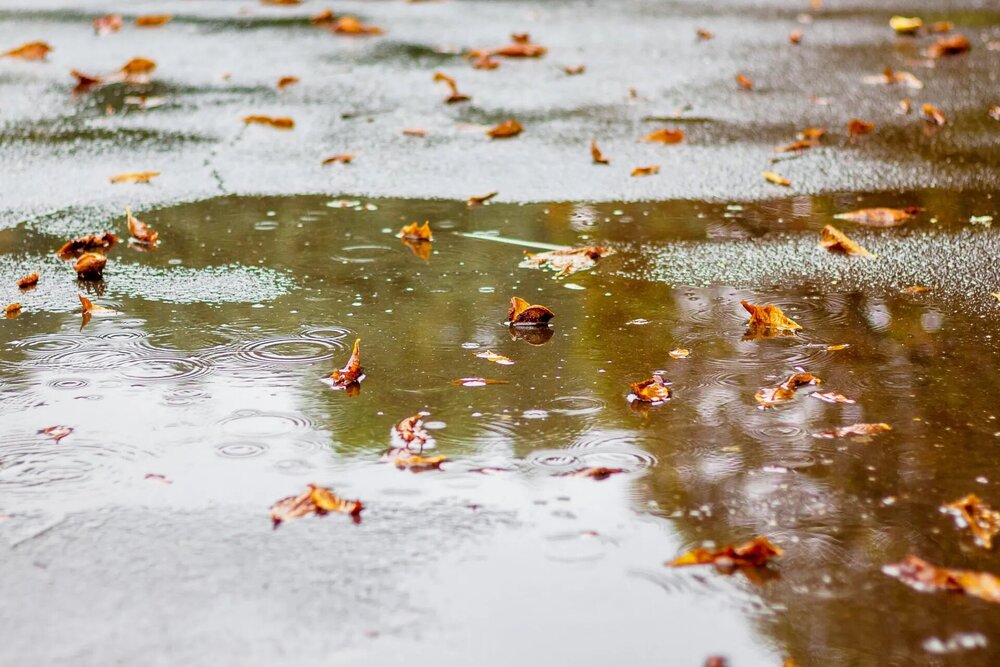Getting the best driveway paving Stevens Point, Wausau, and Madison, Wisconsin has to offer requires you to fully understand multiple elements of paving, including how to install pavement in wet conditions. Without this insight, you are likely to make mistakes that cause damage that will affect your pavement for years (and even decades) and may end up necessitating a complete replacement.
Paving in Rain: It Can’t Be Done
If you attempt driveway paving during a rainstorm, you’re going to quickly find that you made a huge mistake. Most paving companies won’t even try to pave in these kinds of conditions. However, the header here is somewhat inaccurate because you can pave in the rain if absolutely necessary. That said, most professionals will tell you that doing so sets you up for way more problems than the lower time frame is worth.
Understanding this situation requires knowing how the pavement is laid and what materials make up its construction. In your pavement – mainly asphalt and other types – there are a series of oils in the asphalt that actively repels water. Unfortunately, when exposed to water while the pavement is still soft, the oils will expel along with the water. The unintended side effects can be quite brutal.
First of all, the lack of these oils can cause holes or cracks in the surface of the pavement, even as it is drying after installation. Also, if holes and cracks don’t appear immediately, they are likely to develop at any time. Unfortunately, this will likely mean that you need to install an all-new driveway, as repairs will only delay the inevitable and nickel-and-dime you for years after installation.
Paving After Rain: Must Be Done Very Carefully
Most pavers suggest that you wait until a rainstorm has passed before you do any driveway paving for your home. However, the timeline here can be quite tricky. Obviously, you want to wait for the water to thoroughly dry before you install anything on your lawn. However, you can’t wait until just the surface of the ground is dry because water may still exist in the soil for a few days after a heavy rainstorm.
This water typically takes time to work through the soil as it gets absorbed by plants, trees, and grass. Water not absorbed by these plants will evaporate in the sun or run off and away from your yard. However, the soil type may cause unexpected complications, as heavy clay soil may make it more difficult for water to run away from your home and keep water near the surface much longer.
Talk to your paving professionals about this factor before you start any home paving project. Ask them what kind of timeline is wise to follow and how you should plan out this particular aspect of your home or yard paving. They will take a look at your soil to get an idea of how long it should take to dry. Don’t worry – you’ll probably only have to wait a day or two before they can start working.
Paving in Cloudy Conditions: Requires Extreme Caution
If your area has been going through a lot of rain recently but has been dry for a few days, look to the sky. Are there dark and brooding clouds that look like they may rain at any time? Check the weather report and see what they have to say. While you “don’t need a weatherman to know which way the wind blows,” getting an idea of the rain possibilities is always a good idea for homeowners.
Just as importantly, you need to make sure that it not only won’t rain on the day that you pave, but for a few days afterward as well. While your driveway may be dry a day after paving, it still needs some time to cure. Typically, you want to keep the pavement dry for at least two days, minimally, so make sure that rain isn’t going to be an issue before you start your driveway paving in this situation.
Many homeowners may also want to talk about this problem with their paving experts before they even start. You should get an idea from them of how much time it will take to pave and how much curing time you should give the pavement. These times may vary depending on the materials they use and how they mix their pavement, so be prepared to adjust your schedule to suit the rain.
Paving Before Storms: Give Enough Time to Finish
When you know that a storm is going to strike your area in a few days, it is essential to gauge whether or not you want to take the risk. This problem is particularly a concern if the weather is calling for issues such as snow or sleet. These conditions are particularly damaging to the pavement because they can stick around and cause damage to the surface while your pavement dries and cures.
Importantly, you need to pay attention to the temperature changes that may occur during a storm. For example, most paving experts will tell you that you want at least 60 degrees Fahrenheit before you start driveway paving. However, rainstorms may bring in colder temperatures that may drop this temperature below that and even trigger brief bursts of snow and ice that may damage your pavement.
As a result, you may want to reschedule your paving experience if you expect any temperature changes during the storm. These changes can damage your new pavement and cause complications with its curing. If you are starting your paving process too late in the year, there is even a good chance that you might end up having to wait until next year before you get your driveway paved.
How to Improve Your Paving
If you want the best driveway paving Stevens Point, Wausau, and Madison, Wisconsin has to offer, please contact us right away at Custom Paving & Sealcoating to learn more. Our experts have years of experience working with driveways and installing pavement in wet conditions and will work hard to ensure that you get the best results at a reasonable price.

